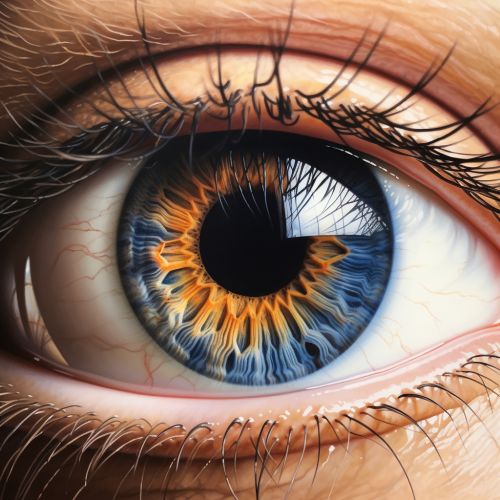Accommodation Reflex
Overview
The accommodation reflex is a reflex action of the eye, occurring in response to focusing on a near object, then looking at a distant object (and vice versa), comprising coordinated changes in vergence, crystaline lens shape (accommodation) and pupil size. It is an involuntary reflex that is not under conscious control. However, it can be consciously overridden, such as when looking through a camera viewfinder where one intentionally 'forces' the eye to accommodate to a typically fixed distance.


Physiology
The accommodation reflex is a complex process that involves several components of the eye. The main components involved are the ciliary muscle, the suspensory ligament, and the lens. The ciliary muscle, which is a ring of smooth muscle in the eye's middle layer, controls accommodation for viewing objects at varying distances and regulates the flow of aqueous humour into Schlemm's canal. It does this by changing the shape of the lens.
Mechanism
When the eye focuses on a near object, the ciliary muscle contracts, causing the lens to become more rounded, thereby increasing its refractive power. This allows the eye to focus light from the near object onto the retina. Conversely, when the eye focuses on a distant object, the ciliary muscle relaxes, allowing the lens to flatten and reducing its refractive power. This allows the eye to focus light from the distant object onto the retina. This process is known as accommodation.
Role of the Pupil
The pupil also plays a role in the accommodation reflex. When the eye focuses on a near object, the pupil constricts to increase the depth of focus of the eye by blocking the outer, unfocused rays of light. Conversely, when the eye focuses on a distant object, the pupil dilates to allow more light into the eye.
Neural Control
The accommodation reflex is controlled by the parasympathetic nervous system, specifically the oculomotor nerve. The oculomotor nerve sends signals to the ciliary muscle and the sphincter pupillae muscle to control the shape of the lens and the size of the pupil, respectively.
Clinical Significance
The accommodation reflex is a vital part of vision and any disruption to it can significantly impact a person's ability to see clearly. Conditions such as presbyopia and accommodative insufficiency are associated with problems in the accommodation reflex.
